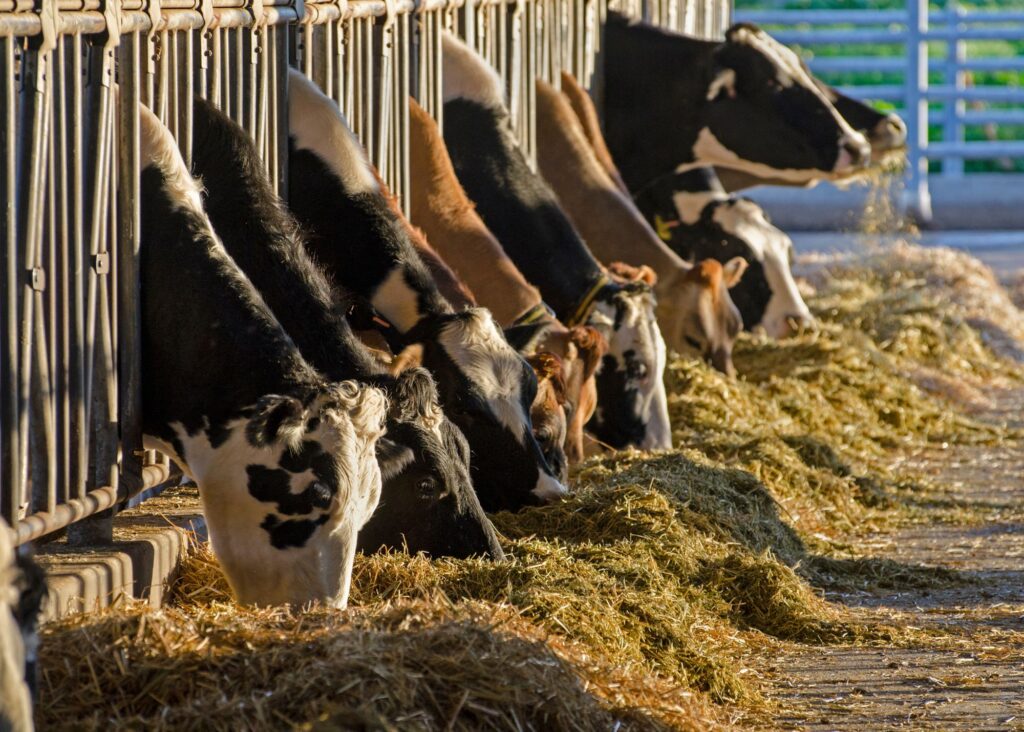Table of Contents
ToggleA breakthrough in methane reduction
Methane emissions from livestock have long been a challenge for climate scientists and policymakers. Accounting for approximately 14.5% of global anthropogenic greenhouse gas emissions, methane from ruminant digestion is a key contributor to climate change. Efforts to curb these emissions have included dietary modifications, selective breeding, and novel feed additives, yet a scalable, cost-effective solution has remained elusive.
In a groundbreaking discovery, Australian scientists have identified a naturally occurring soil fungus, Curvularia, that produces bromoform, a compound capable of reducing methane emissions from livestock by up to 90% when added to their feed. This natural alternative to traditional methane reduction strategies could revolutionize the livestock industry by providing a scalable, cost-effective, and environmentally sustainable approach to cutting emissions.
How bromoform inhibits methane production
Bromoform is a naturally occurring halomethane that disrupts methane production in ruminants by inhibiting the activity of methanogenic archaea in the digestive system. These microorganisms are responsible for methane generation as they break down fibrous plant material in the rumen. By blocking the final step of methane biosynthesis, bromoform significantly reduces the volume of methane released by cattle, sheep, and other ruminants.
The methane-inhibiting properties of bromoform have been well-documented in previous studies, particularly in research on red seaweeds from the Asparagopsis genus, which naturally contain high concentrations of the compound. Feeding trials involving seaweed supplements have demonstrated methane reductions of up to 97%. However, the commercial scalability of Asparagopsis cultivation has been a challenge due to high production costs and the limited availability of suitable marine farming sites.
By contrast, Curvularia fungi, which can be cultivated in controlled environments, present a promising alternative. This discovery allows for the production of bromoform without dependence on marine ecosystems, potentially making methane-reducing feed additives more affordable and accessible to livestock producers globally.
Advantages of a fungal-based solution
Cost-effective and scalable
One of the most significant advantages of using Curvularia-derived bromoform is its potential cost-effectiveness. Unlike seaweed-based solutions, fungal cultivation requires less specialized infrastructure and can be scaled up more efficiently. This could lower production costs, making methane-reducing feed supplements more economically viable for livestock producers in developed and developing agricultural economies alike.
Sustainable production
The controlled cultivation of Curvularia also addresses sustainability concerns associated with seaweed farming. Large-scale Asparagopsis production requires significant marine resources and specific environmental conditions, which can create logistical and ecological challenges. Fungal cultivation, on the other hand, can be conducted in a variety of controlled agricultural settings, ensuring a consistent and sustainable supply of bromoform.
Compatibility with existing livestock diets
Another advantage of the Curvularia-based approach is its ease of integration into existing livestock diets. Unlike seaweed, which requires careful formulation to avoid negative impacts on taste and nutritional balance, fungal-derived bromoform can be incorporated into standard feed formulations with minimal adjustments. This simplifies the adoption process for farmers and feed manufacturers.

Implications for the livestock industry
Addressing climate targets
Governments worldwide have been pressuring the livestock industry to reduce its environmental impact, with several countries introducing emissions reduction targets for agriculture. The European Union, for example, has pledged to reduce methane emissions from agriculture as part of its climate action framework, while the Biden administration has prioritized methane reduction under the Global Methane Pledge. The emergence of an effective, scalable methane-reducing feed additive could provide livestock producers with a viable pathway to compliance with these policies.
Maintaining market competitiveness
With increasing consumer awareness of sustainability issues, major food retailers and meat producers are under pressure to demonstrate their commitment to reducing their environmental footprint. Companies such as JBS, Tyson Foods, and Cargill have already begun investing in methane-reducing solutions, including feed additives and regenerative farming practices. The adoption of Curvularia-based supplements could provide an additional competitive edge for producers looking to differentiate their products in an increasingly climate-conscious marketplace.
Potential cost savings through carbon markets
The introduction of methane-reducing feed additives may also open new opportunities for livestock producers in carbon markets. Many countries and corporations have established carbon credit schemes that reward emission reductions, and a scalable methane-reduction solution could enable farmers to monetize their sustainability efforts through carbon offset programs.
Challenges and regulatory considerations
Regulatory approvals
Despite its promise, Curvularia-based bromoform supplementation will require regulatory approvals before it can be widely adopted. Feed additives are subject to stringent safety and efficacy evaluations, particularly in key markets such as the United States, the European Union, and Australia. Scientists and regulatory bodies will need to conduct comprehensive studies to ensure that bromoform levels in meat and dairy products remain within safe limits for human consumption.
Consumer perception and transparency
Consumer acceptance of fungal-derived feed additives will be another critical factor in determining their success. Transparency in communication regarding safety, efficacy, and environmental benefits will be essential to gaining public trust. Food industry stakeholders may need to engage in educational campaigns to reassure consumers that methane-reducing additives do not compromise food quality or animal welfare.
Long-term environmental impact
While Curvularia-derived bromoform appears to be a promising solution, its long-term environmental impact requires further study. Potential concerns include the persistence of bromoform residues in agricultural systems and any unintended consequences for soil microbiomes or water quality. Ongoing research will be necessary to fully assess and mitigate any potential risks.
The future of methane mitigation in livestock agriculture
The discovery of Curvularia fungi as a natural, scalable source of bromoform represents a significant breakthrough in the quest to reduce methane emissions from livestock. With the potential to cut emissions by up to 90%, this fungal-based solution offers hope for a more sustainable future for the livestock industry.
As research progresses, collaboration between scientists, agricultural policymakers, and industry stakeholders will be essential to accelerating the development and adoption of this technology. If regulatory hurdles are overcome and commercial production becomes viable, Curvularia-based feed additives could become a cornerstone of climate-smart livestock farming.
For now, the challenge lies in bridging the gap between scientific discovery and practical implementation. But if successful, this innovation could pave the way for a more sustainable global food system—one where livestock producers can continue to meet the world’s protein demands while dramatically reducing their environmental footprint.




